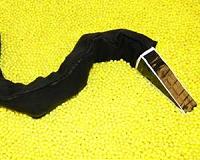| . |  |
. |
Lorca, Spain (AFP) May 12, 2011 Army and emergency workers pitched tents and handed out food to thousands of evacuees Thursday after a killer 5.1-magnitude quake smashed through a historic Spanish city. Nine people, including a child, perished when Spain's deadliest quake in more than 50 years rocked the southeastern city of Lorca on Wednesday, the regional government of Murcia said. An open-air funeral mass will be held in the city Friday morning, attended by Prime Minister Jose Luis Rodriguez Zapatero, Crown Prince Felipe and his wife Letizia. The earthquake struck at 6:47 pm (1647 GMT) Wednesday at a depth of just 10 kilometres (six miles), coming nearly two hours after a smaller 4.4-magnitude quake. Flattening some buildings, ripping open many walls and sending chunks of masonry flying into the streets, the tremor injured another 130 people, regional emergency services chief Luis Gestoso said. The Red Cross said the quake forced some 15,000 of the town's 93,000 inhabitants from their homes. Bulldozers cleared streets filled with stones, bricks, cornices, collapsed terraces and crumpled cars. Some 20,000 buildings including many from the 16th and 17th centuries were reported damaged in Lorca, which traces its history back more than 2,000 years. Mayor Francisco Jodar said 80 percent of the city's buildings suffered some damage. The clocktower of the 17th century San Diego Church tumbled and shattered in the street, narrowly missing a television reporter as he delivered a report on Spanish public broadcaster TVE. Its bronze bell lay in the rubble. "Almost no-one slept in their homes last night," the mayor said. In the main market place hundreds of people including children in pushchairs waited in the hot sun for food packages containing powdered re-hydration drinks, jam, cereal bars and water. The Red Cross distributed 10,500 blankets, food, water and 2,000 foldup beds. As thousands lined up for shelter, Zapatero said 370 army tents had been sent to the area. Interior Minister Alfredo Perez Rubalcaba added that authorities could provide 3,500 places for the night in four tent camps. "If necessary, we can add another 1,500 places," to this total. The prime minister sent his condolences to the relatives of those killed and said the government was acting with maximum speed to confront "this catastrophe". The government had sent in 800 personnel, half of them military emergency units and troops and the rest police, to help shelter the many homeless, Zapatero said. The military emergency units had 140 vehicles to help clear the debris, he said. Emergency workers were checking building by building to decide which can be repaired and which would have to be demolished, the premier said. "We will spare no effort for the reconstruction," he vowed. Spain's seismological authorities predicted smaller after-shocks in the next month in the region, which lies on a geological fault line. The president of Spain's College of Geologists, Luis Suarez, said the quake released energy equal to 200 tonnes of TNT and he expected the intensity of aftershocks to diminish. A quake of this scale was not strong enough to bring buildings to the ground, and the scale of the damage must have been due to pre-existing structural problems, Suarez said in a statement. The area's sandy soil also made the impact worse, he said. "We know we live near a fault line but we never thought this would happen to us," said Pepe Tomas, 56, a male nurse at a local clinic who has lived his whole life in the city. Tomas said he had helped treat hundreds of people "mostly for anxiety". The Socialist Party's Zapatero and his conservative Popular Party opponent Mariano Rajoy agreed to suspend campaigning for regional elections May 22 because of the disaster. A total of 350 ambulances transferred 400 patients out of two of the town's hospitals, one of which sustained structural damage, the regional government said. It was the deadliest earthquake in Spain since April 19, 1956 when a tremor wrecked buildings and killed 11 people in Albolote, a town in the southern Spanish province of Granada.
Share This Article With Planet Earth
Related Links Bringing Order To A World Of Disasters A world of storm and tempest When the Earth Quakes
 Tiltable head improves ability of robots to navigate disaster debris
Tiltable head improves ability of robots to navigate disaster debrisAtlanta GA (SPX) May 11, 2011 Search and rescue missions have followed each of the devastating earthquakes that hit Haiti, New Zealand and Japan during the past 18 months. Machines able to navigate through complex dirt and rubble environments could have helped rescuers after these natural disasters, but building such machines is challenging. Researchers at the Georgia Institute of Technology recently built a robot that ... read more |
|
| The content herein, unless otherwise known to be public domain, are Copyright 1995-2010 - SpaceDaily. AFP and UPI Wire Stories are copyright Agence France-Presse and United Press International. ESA Portal Reports are copyright European Space Agency. All NASA sourced material is public domain. Additional copyrights may apply in whole or part to other bona fide parties. Advertising does not imply endorsement,agreement or approval of any opinions, statements or information provided by SpaceDaily on any Web page published or hosted by SpaceDaily. Privacy Statement |